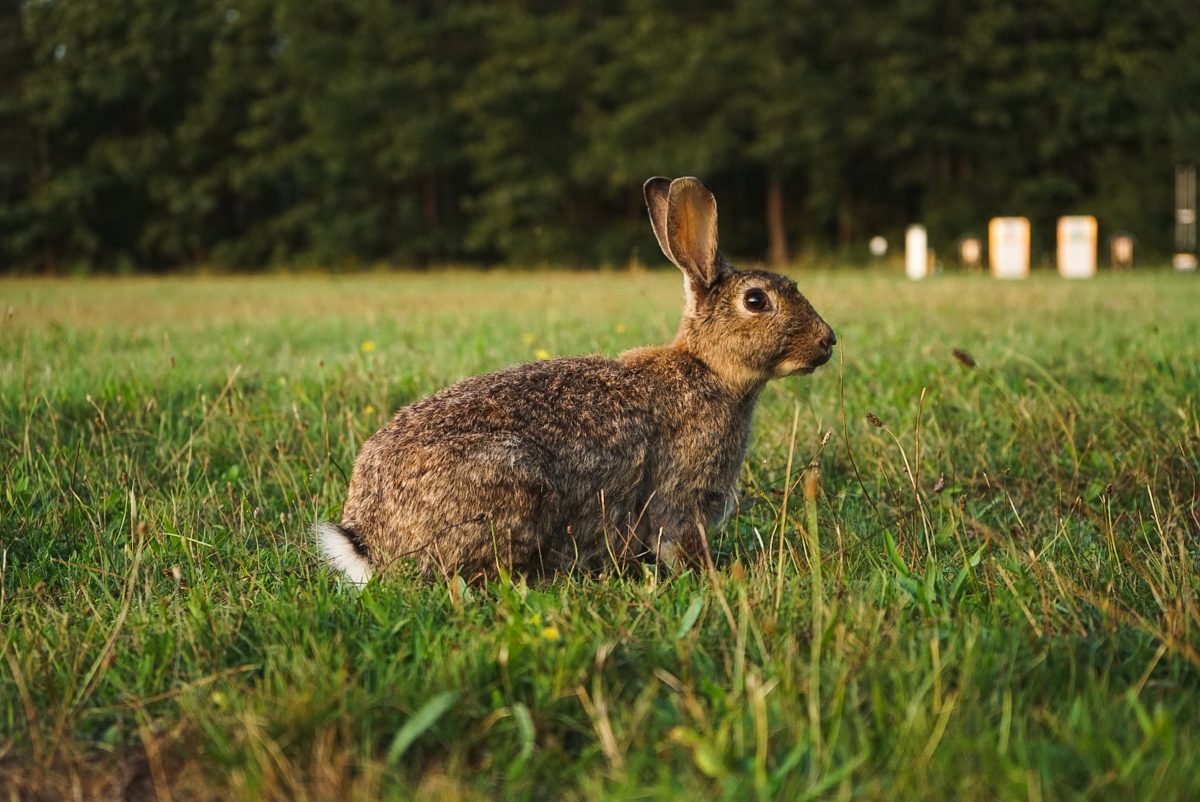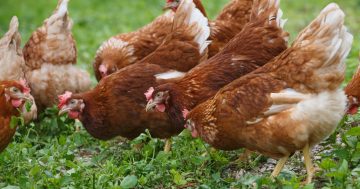
Rabbits are beginning to outpace the effects of the latest virus. Photo: Dylan Calluy.
They may be cute and cuddly bundles of joy, but the truth is – left unchecked – rabbits are a scourge.
A double whammy of wet weather and a waning virus means there are even more of them hopping around the city and Lake Burley Griffin than usual. The looming spring – the official start of breeding season – will only make things worse.
The ACT Environment, Planning and Sustainable Development Directorate says rabbits alone have contributed to the extinction of many native plant and animal species.
Rabbits compete with livestock for pasture and kill young trees and shrubs by stripping them of bark. If left uncontrolled, rabbits will invade suburban gardens and cause even more damage to the environment and private property.
Research fellow and associate professor at the Australian National University (ANU), Richard Thackway, has dealt with rabbits his entire life, from shooting them on the farm to studying their growth in the ACT’s south. He says the impact of rabbits can be “absolutely horrendous”.
“Particularly in the sandy soils, rabbits burrow and eat every piece of vegetation on the landscape so the wind erosion just lifts away the soil. They destroy farmland.”
Richard says governments, industry experts and individuals have “tried their darndest” to get rid of the rascally rabbits for years with mixed success.
“We’ve tried throwing poisonous gases down the burrows, ripping their burrows open with bulldozers, and viruses,” he says.
“The latter works for a little while but the virus keeps mutating.”

Humans aren’t alone at Lake Burley Griffin. Photo: Michelle Kroll.
A new strain of calicivirus was released into two populations of pest rabbits in the ACT in March 2017 as part of a national rollout. This followed a largely unsuccessful bout in 2007 and built on an integrated rabbit control program introduced in 2009.
At first, the haemorrhagic virus crashed the local numbers. But Richard says like all viruses, it’s weakening.
Then there’s the weather. Like mice and rats, rabbits explode when there is plenty of food to be found. And thanks to at least two wetter-than-usual years in Canberra, there is a veritable feast of greenery.
The situation reached fever pitch in December 2021 when the ACT Government brought in professional shooters to rein in numbers near Parliament House.
Rabbits were first introduced to Australia in 1859 so the landed gentry could enjoy a spot of hunting. Initially, they struggled to get off the ground due the large number of native predators.

Richard Thackway has looked into Australia’s rabbit problem for decades. Photo: ANU.
“But acclimatisation societies were brought in because people seemed hell-bent on the fact we must have rabbits for hunting,” Richard says.
“And so we killed many of these native predators.”
In the right conditions, rabbits can have as many as seven litters a year with up to 12 babies at a time. These babies can begin reproducing as little as four months later.
With predators out of the way, rabbit numbers hit 600 million within 70 years. Stoats and ferrets were brought in to restore order and in turn, their numbers spiralled out of control. So foxes were introduced to help the native dingoes keep on top of all three species.
“We stuffed it up completely,” Richard says.
Andreas Glanznig from the Centre for Invasive Species Solutions, based at the University of Canberra, has championed a long-term rabbit bio-control pipeline strategy since 2012. He says the initial release of the myxomatosis virus in 1950 is still thought to be killing almost half of all rabbits but effectiveness typically begins to wane after 10 to 15 years.
“What we’re beginning to see is rabbits outpacing the effects of the latest virus, so a new strain has to be released every eight to 10 years if we are to stay ahead in the arms race.”
Andreas says the virus also has to be released at the right time so the young rabbits don’t develop immunity. Typically, this is late autumn.
ACT rangers took five years to eradicate foxes and rabbits from a new enclosure at the Mulligans Flat nature reserve, so Andreas says eradication is nearly impossible and the future relies on population management. Invasive Species Solutions is currently looking into bio-genetic technology to control numbers.
“We can’t become complacent around the impact of rabbits on the environment. As soon as we do, they’ll breed themselves into plague proportions.”













